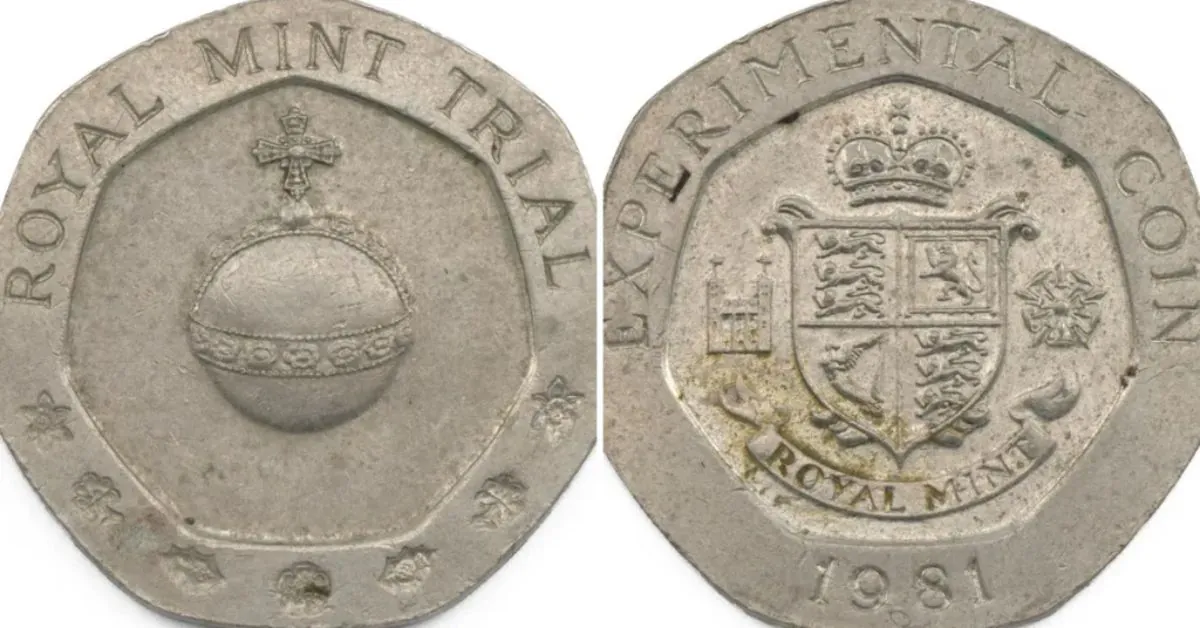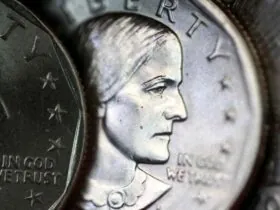A rare and fascinating coin recently captured the attention of collectors and numismatists when it sold for an astonishing £1,700, far exceeding its estimated value. This ultra-rare 25p coin, initially thought to be a trial piece from the Royal Mint, fetched a remarkable price at auction—6,800 times its face value. The coin is one of only about 50 believed to be in circulation, with even fewer made from nickel brass, making it a truly unique collector’s item.
The History Behind the Ultra-Rare 25p Coin
This Article Includes
The coin in question is not an ordinary 25p piece, but rather a “trial piece” or “pattern coin,” which was created by the Royal Mint before the official release of the 20p denomination in 1982. At the time, the Royal Mint was uncertain about whether the new coin would be valued at 20p or 25p, which led to the creation of these prototype coins. The trial pieces were used to demonstrate potential designs and gauge public reaction before settling on the seven-sided 20p coin that we recognize today.
Experts believe these trial pieces were produced in small quantities and may have been distributed to businesses that frequently handled cash for testing. The 25p version in question, crafted from nickel brass, stands out as one of the rarest among its counterparts.
Auction Sale and Estimated Value
RWB Auctions, located in Royal Wootton Bassett, recently featured this rare coin in a specialist sale of historic and modern currency. The auction house had estimated the coin would fetch between £500 and £700, based on its rarity and historical significance. However, the bidding exceeded expectations when the coin sold for a staggering £1,700, demonstrating the high demand among serious collectors for such unique pieces of numismatic history.
This particular 25p coin is even rarer than others, as fewer examples were made from the nickel brass material. The fact that this coin remained in circulation for so long before being acquired by a collector adds to its appeal, making it a true gem in the world of coin collecting.
The Appeal of Trial Pieces and Pattern Coins
Trial pieces and pattern coins are highly sought after by numismatists and collectors because they represent the experimentation phase of coin design. These rarities often hold significant value due to their historical importance and the glimpse they provide into the decision-making process of the Royal Mint.
YouTuber Christopher Collects, who works for RWB Auctions, commented on the coin’s uniqueness, calling it “fascinating.” He explained that although the 20p coin is now a familiar part of everyday currency, the Royal Mint initially experimented with various ideas before finalizing the design. The trial pieces would have been used to show the concept to officials and businesses, allowing them to assess practicality and public response.
The Royal Mint’s Experimentation with Coin Designs
The Royal Mint’s experimentation with coin designs in the early 1980s reflects its commitment to creating currency that would meet both practical and aesthetic standards. The decision to settle on the seven-sided 20p coin came after several trials, including those with 25p-shaped prototypes. Such trial pieces were invaluable in determining how a coin would circulate in everyday use.
While the 25p coin in question was never officially released into circulation, its historical significance and rarity make it a highly desirable item among collectors. As with other pattern coins, its value lies not just in its metal content, but in the story it tells about the evolution of British currency.
Conclusion
The sale of the ultra-rare 25p coin for £1,700 highlights the growing interest in rare and historical coins among collectors. With only a handful of these coins in existence, particularly those made from nickel brass, their value is expected to continue appreciating. This fascinating piece of numismatic history serves as a reminder of the Royal Mint’s experimentation with coin designs and the ongoing allure of trial pieces and pattern coins in the world of collecting.







Leave a Reply